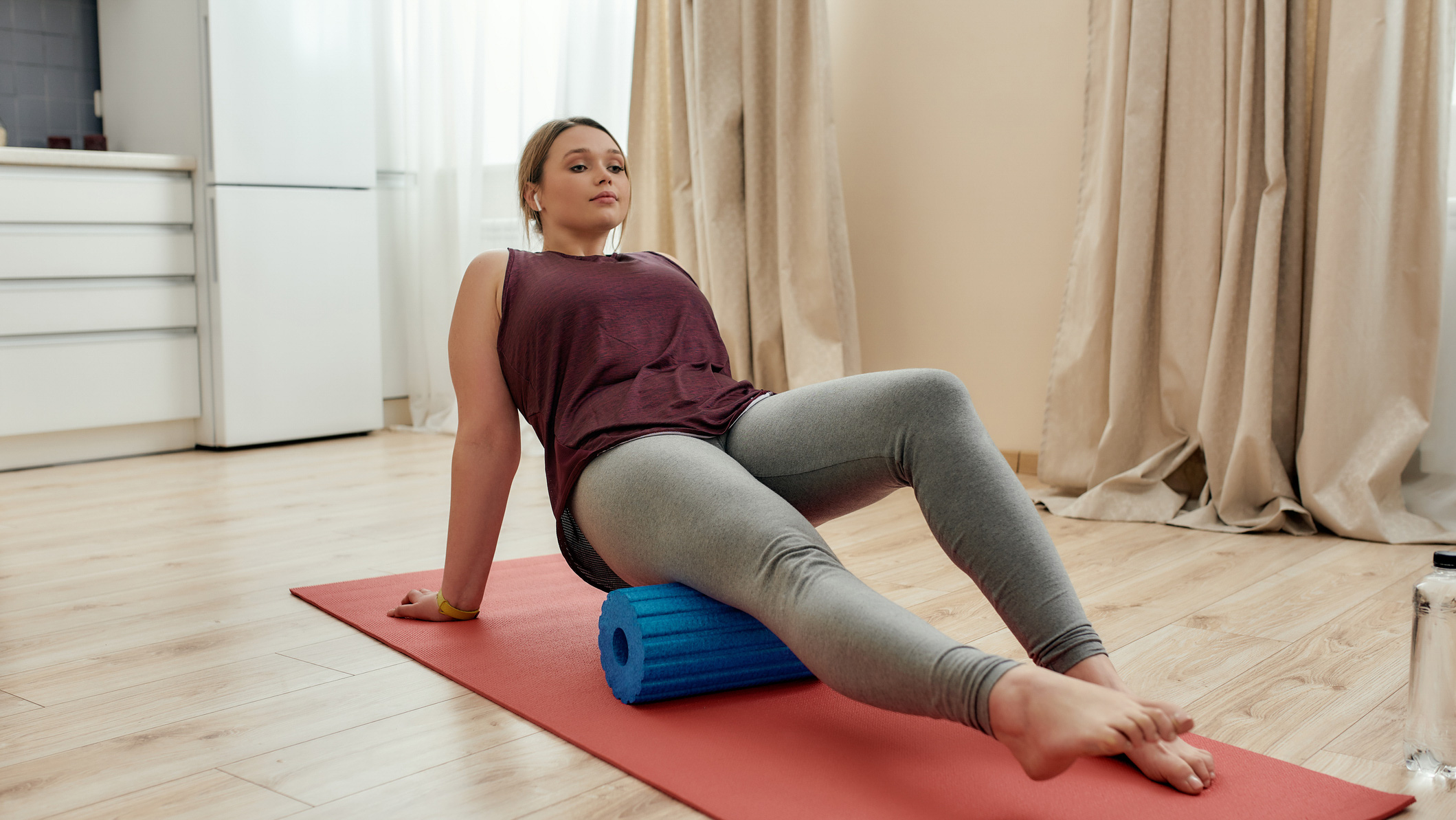
Earlier in the year I was faced with every runner's worst nightmare: a knee niggle. After some rest, extra stretches, and a break from running, I was dismayed to find my injury had not gone away, so it was off to physiotherapy for me.
Among the great tips from my physiotherapist, I was told to foam roll my muscles as well as stretch them. Keen to get back out running, that’s what I did. I added daily foam rolling of my thighs and surrounding muscles to see if it would aid my recovery.
My results after a week of foam rolling
I tried foam rolling exercises for two weeks, but alongside this, I meticulously followed a stretching routine and had three sessions of shockwave treatment on my knees. I’m now running again, but I can’t say that my recovery is entirely down to the foam roller.
However, I definitely benefited from the feedback the foam roller gave me. It helped me identify tight areas, indicating exactly where I was in my recovery. When the muscles surrounding my knees were uncomfortable, I knew I wasn’t ready to run; but as they started feeling better, I could tell my recovery was progressing.
I now incorporate 5-10 minutes of foam rolling into my recovery and find that my muscles feel more relaxed and less prone to stiffness after a tough run. If you want to do the same, I'd recommend getting yourself a cheap foam roller like this $15 option from Amazon.
With my new regime, I was intrigued to find out more about foam rolling and how it affects the body, so I chatted with Alexa Duckworth-Briggs, a certified running coach and sports massage therapist at We Run.
What is foam rolling?
Foam rolling is an easy way to massage and relieve stiff muscles before or after exercise, using a foam cylinder-shaped object. You use it by rolling it under different parts of your body to reduce tightness and increase blood flow in the area.
"Foam rolling massages your muscles, which can help keep them loose and aid recovery," Duckworth-Briggs explains. "It also acts as a stretch for the fascia, which is a collagen-like material that covers and connects our muscles, joints, and tendons, leading to a feeling of increased flexibility."
Are there any benefits to foam rolling?
According to Duckworth-Briggs, one of the main benefits of foam rolling is awareness of how your body feels; if certain muscles are tight or sore, it’s good information to take heed of.
She explains: "The scientific evidence is a bit mixed here, but in my experience, regular foam rolling can give useful sensory feedback on which muscles are tighter than usual, or if one side feels different from the other. This can be a useful 'heads up' on any areas of the body that are struggling a bit with your training, or might need more strength work or a trip to the physio. Taking these actions early can help prevent injuries from developing."
From an injury recovery perspective, foam rolling is beneficial if muscle tightness is at play. She says: "Foam rolling is similar to other types of self-massage and can be useful for loosening tight muscles. So for any injury where muscle tightness is part of the problem, foam rolling can be a useful part of the rehab approach. Any muscles your physio asks you to regularly stretch will also benefit from a foam roll."
However, the benefits of foam rolling are debated. "Despite many people finding foam rolling useful, there is a mixed scientific evidence base for foam rolling, so there is no definitive set of clear studies demonstrating the benefits," she explains. "It's a difficult intervention to study, though, as to conduct a study that discounts the placebo effect from any measured benefits, the participants would need to be blinded to whether they had received the treatment or not, and you certainly know whether you've used a foam roller or not!
"You'll often hear the phrase 'absence of evidence is not evidence of absence,' and this is certainly worth bearing in mind with the science around foam rolling."







